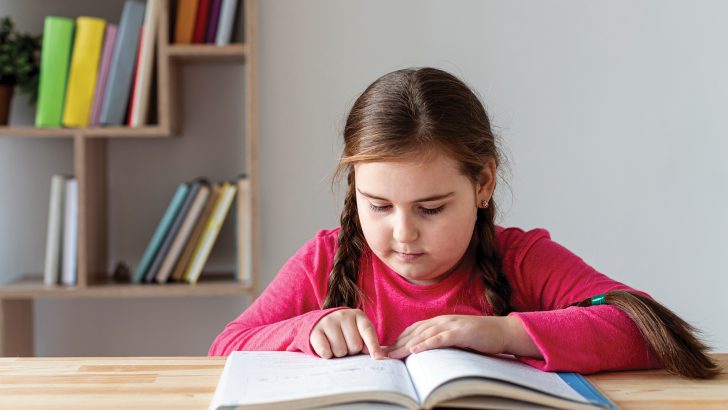Ruadhán Jones discusses how children can improve their word skills at home
Many parents have struggled to effectively help their children with schoolwork during lockdown; for parents of children with dyslexia, it’s even more challenging.
Experts suggest that around 10% of children in Ireland are affected by dyslexia. This suggests that there are many school children in Ireland struggling with basic reading and spelling skills.
Even teachers struggle to deal with this ‘high incident’ issue within mainstream classes. In fact, recent research found that 97% of teachers agree they need and would benefit from training on dyslexia.
Given the prevalence of dyslexia and the difficulties teachers find in dealing with it, it’s not a surprise that parents face an uphill challenge. The current Covid-19 restrictions and long summer break only exacerbate this issue.
What is dyslexia?
Given how fundamental reading and writing skills are for most walks of life, being aware of how to identify and address dyslexia is important. Dyslexia is a common type of learning difficulty that mainly affects the skills involved in reading and spelling.
It is a spectrum disorder, which means that symptoms can range from very mild to very severe. It’s important to remember that there’s no connection between dyslexia and intelligence; how difficult a child finds reading and spelling is determined by how severe their dyslexia is.
According to the HSE, there are three main areas people with dyslexia have difficulties:
- Phonological awareness
- Verbal memory
- Verbal processing speed.
Phonological awareness is the ability to identify how words are made up of smaller units of sound. Changes in the sounds that make up words can lead to changes in their meaning – e.g. replace the ‘p’ in ‘pat’ with an ‘s’ and you get ‘sat’. This is thought to be a key skill in early reading and spelling development.
Verbal memory is the ability to remember a sequence of verbal information for a short time period, while verbal processing speed is the time it takes to process and recognise familiar verbal information, like letters and digits.
Signs of dyslexia
Each person with dyslexia will have a unique pattern of strengths and weaknesses. It can be difficult to identify, especially in young children, because the signs and symptoms are often subtle.
Younger children might have problems learning names and sounds of letters, issues with spelling and problems copying written language. As children with dyslexia grow older, it becomes more apparent, with signs such as slow reading and writing speed, poorly organised written work which lacks expression and problems understanding and recognising new words.
If you have a concern, you should consult with your child’s class teacher first. If you have a continuing concern, you could also seek the advice of your GP. The main thing is not to jump to conclusions and to seek expert advice. There are ways to help your child cope and then grow, so diagnosis can be helpful.
How can dyslexia be treated
It’s not clear what causes dyslexia and there is no cure, but a range of educational programmes and interventions have proven effective in improving reading and writing skills in many children with dyslexia.
According to the HSE, there is evidence that suggests the best ways to teach phonics to children with dyslexia contains a number of features. Some of these key features are structure, multisensory, and breaking down emotional barriers, though this list is not exhaustive.
Some features, such as structure, are almost self-evident – teaching needs to be structured, developing in small steps and logically following what has been learnt already. Reinforcement is an important step in this process, as children with dyslexia frequently have to ‘overlearn’ a skill they have already mastered.
The others are more complicated. Multisensory relates to the different ways in which people learn – listening, looking and touching. Children with dyslexia learn best when all these different methods are engaged. For example, when teaching a dyslexic child the alphabet, show them the letter, let them say it and also trace it in the air.
Lastly, it is important to recognise the emotional barriers that children with dyslexia can develop, such as anxiety, frustration and low-confidence. Stress has been proven to impact negatively on memory and learning in general, and can make issues associated with dyslexia more acute.
When teaching children with dyslexia, it’s important to address these potential barriers and break through them. This is best achieved through encouragement, empathy and fostering self-esteem.
Practical tips to remember
You have some background now, but how can you put it into practice as a parent? Explaining to your child what it means to have dyslexia is an important step. In explaining, highlight that it is not the child’s fault and that there are ways to overcome it.
Once you are both aware of what’s happening, there are some simple practices that you can do to help. There’s an obvious beginning and that’s to read to and with your child, as often and as long as possible.
The benefits are manifold, helping to develop vocabulary, learning pronunciation and punctuation, and creating positive associations with reading. It is a way to learn without pressure and with enjoyment.
Playing games together is another sure-fire way of learning in a way that’s enjoyable. From ‘I spy’ to memory games, draughts and chess, games give context to the words children learn and this helps to reinforce them.
Don’t underestimate the amount of learning a child does simply by being with you and observing. Parents are the most important teachers of their children, not necessarily formal teaching, but informal teaching – through singing, playing and simply talking.
Promoting visual learning
Over recent years, there has been an international drive to recognise the strengths those with dyslexia have, rather than emphasising the difficulties they face. For example, many people with dyslexia have highly developed visual skills.
However, most early years reading and spelling is taught through small-detail, linear processes of separating out the sounds of language. This predominantly auditory way of learning to read has proved to be difficult for those with dyslexia.
People who are proficient at spelling and reading will have automatically developed what is known as a ‘visual word bank’ that allows them to quickly recognise words. Despite many people with dyslexia having highly effective visual skills, they are rarely encouraged to use these skills to visualise letters and words in a stable and consistent manner.
For people with dyslexia, encouraging the use of their strong visual skills is one way of overcoming their issues. For example, many older children with dyslexia are more comfortable working with a computer than an exercise book.
This may be because the computer uses a visual environment which corresponds more closely with their way of thinking. Through a different type of learning, they can develop their ‘word bank’, making it easier to read and spell.
Useful resources
If you are looking for help in this area, a new process, The Jumpstarting system, developed by learning diversity expert Sara Haboubi seeks to help a child to use their natural visual strengths to overcome their learning challenges.
By helping students with dyslexia harness their visual skills for reading and spelling, they are able to master basic literacy skills in a way that suits how their brains are wired. It can also be used alongside any phonics programme that a child is following.
The jumpstarting system is available for parents to aid them under lockdown. This course furnishes parents with the knowledge, understanding and practical tools for helping their children acquire the fundamental skills that lead to proficient spelling and fluent reading.


 Ruadhán Jones
Ruadhán Jones
